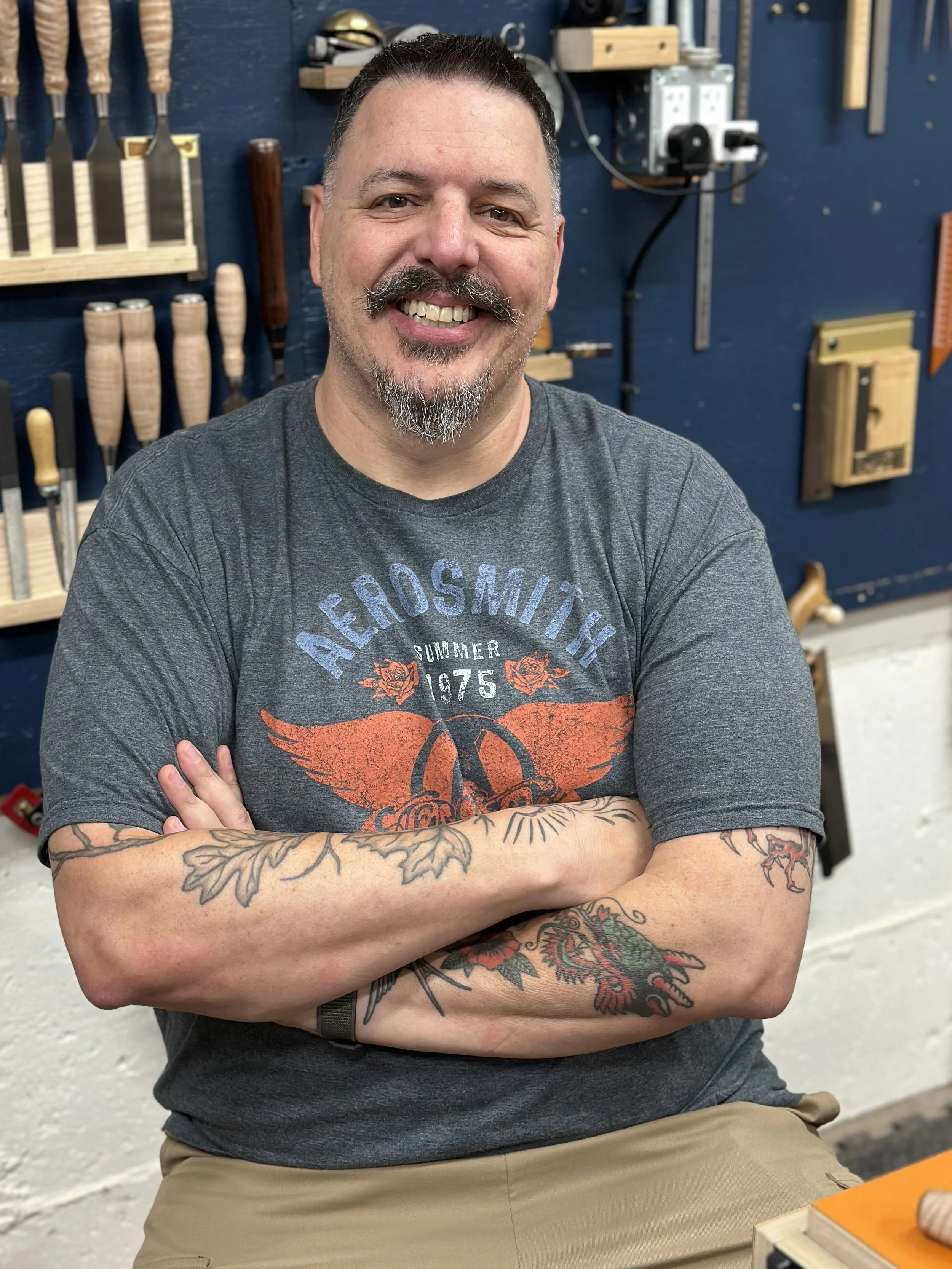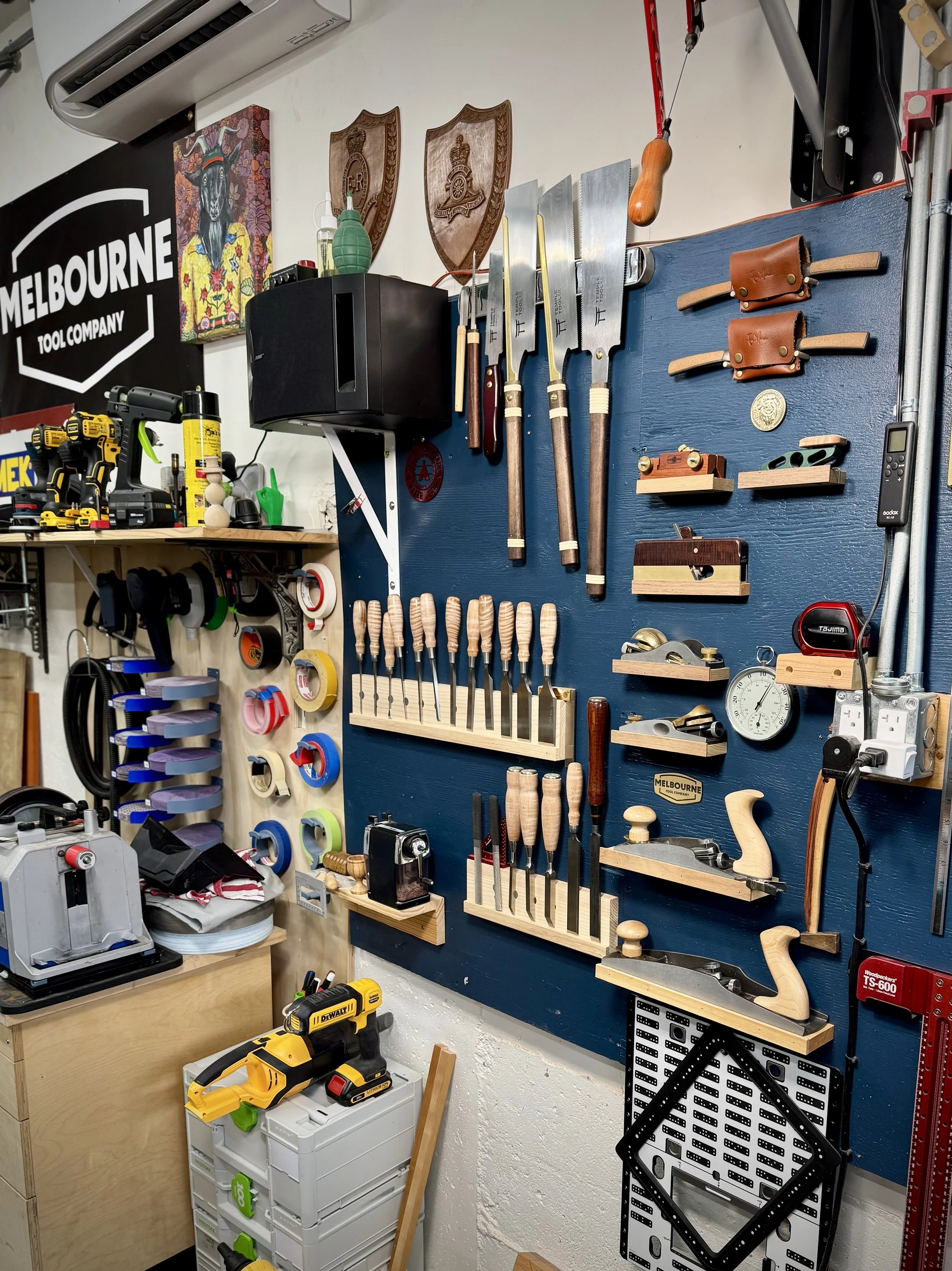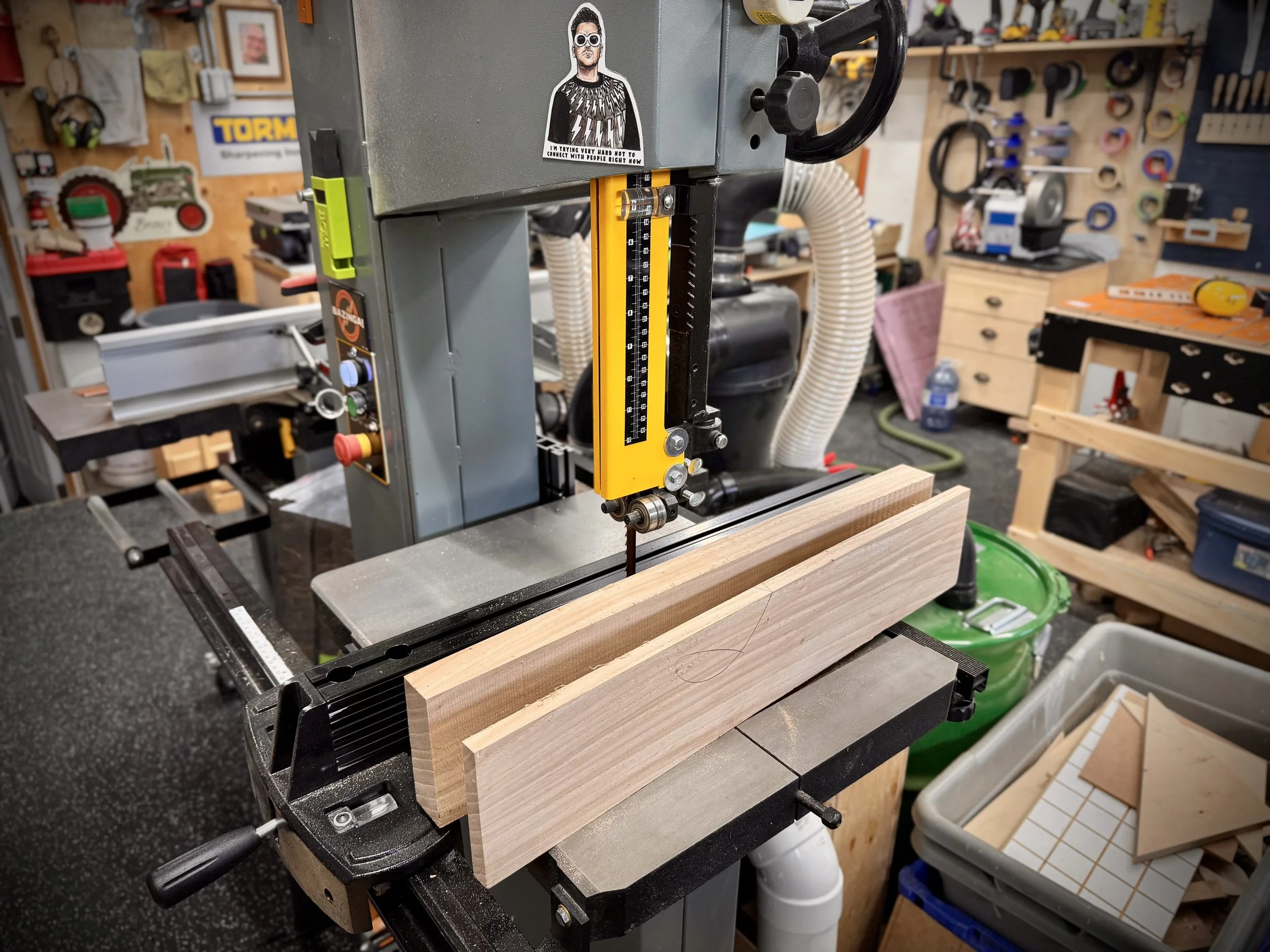Hi! My name is Vic Tesolin
I’ve been living and breathing woodworking for more than twenty years. Before that, I spent 14 years in the Royal Canadian Horse Artillery, where I learned a lot about discipline, precision, and the value of a well-oiled machine. After my time in uniform, I traded steel for wood and studied furniture design and making at Rosewood Studio, learning from some of North America’s top craftspeople.
From there, I launched a small furniture business while teaching part-time at Rosewood and serving as craftsman-in-residence. That blend of designing, building, and teaching lit the fire that still keeps me going today.
Over the years, I’ve worn a few different woodworking hats, from editor at Canadian Woodworking & Home Improvement magazine to Woodworking Technical Advisor at Lee Valley/Veritas Tools. At Lee Valley, I helped develop tools, taught classes, and traveled around the world to present at shows and conferences.
These days, my main focus is Vic Tesolin Woodworks (VTW). What started as a way to teach woodworking both online and in person has grown into collaborations with international tool and woodworking companies. Along the way, I’ve written two books, The Minimalist Woodworker and Projects from the Minimalist Woodworker, and contributed to magazines like Fine Woodworking, Australian Wood Review, and Canadian Woodworking.
Now I’m circling back to what pulled me into this craft in the first place: designing and making furniture. When I’m not in the shop, you’ll probably find me writing for Fine Woodworking or co-hosting their Shop Talk Live podcast.
Some of my thoughts…
There are as many ways to work wood as there are people doing it. Every woodworker has their own way of getting things done, and no single method is more “right” than another. They’re just different. If it works for you, that’s the right answer.
These days, it feels like we spend more time online arguing about techniques than actually trying them. The truth is, you’ll learn far more by picking up a tool and giving something a go than by typing out your opinion on a forum.
I think we need to spend less time talking at each other and more time listening. Everyone has something to offer, and you might be surprised what you can learn if you keep an open mind. The only real secret to getting better at woodworking is to show up and do the work. Understanding comes through doing—there’s no shortcut.
The Beauty of Hand Tools
There’s nothing quite like the feel of a freshly planed surface. The grain comes alive under your hands, and the sheen is like nothing else. Hand tools are the yin to my machines’ yang. They slow me down, keep me mindful, and make me look closer at every surface I touch.
Machines Are My Apprentices
That said, machines have their place too. In my shop, they’re like apprentices who never need coffee breaks or HR policies. Keep their blades sharp and give them a little maintenance now and then, and they’ll work all day without complaint.
You don’t need machines to be a woodworker. For years, I didn’t have the space for them. Now that I do, I let them handle the grunt work—resawing, thicknessing, or other repetitive jobs that don’t need finesse.
But here’s the thing: if I had to move into an apartment tomorrow, I’d still be a woodworker. My passion isn’t tied to the size of my shop or the number of machines I own—it’s in the act of making.
Woodworking has always been about balance for me—between hand and machine, patience and progress, tradition and curiosity. It’s not about doing it the “right” way. It’s about finding your way.
Come Work With Me
If this way of thinking about woodworking resonates with you, come spend some time in my shop. I teach both in-person and online, helping woodworkers of all levels find their rhythm at the bench. Whether you’re just getting started or looking to deepen your skills, I’d be glad to help you along the way. Simply fill out the form to have a chat.



